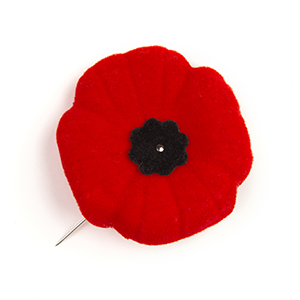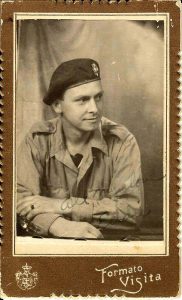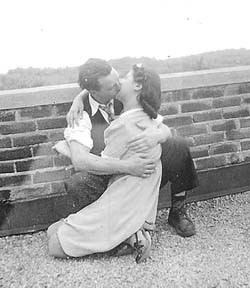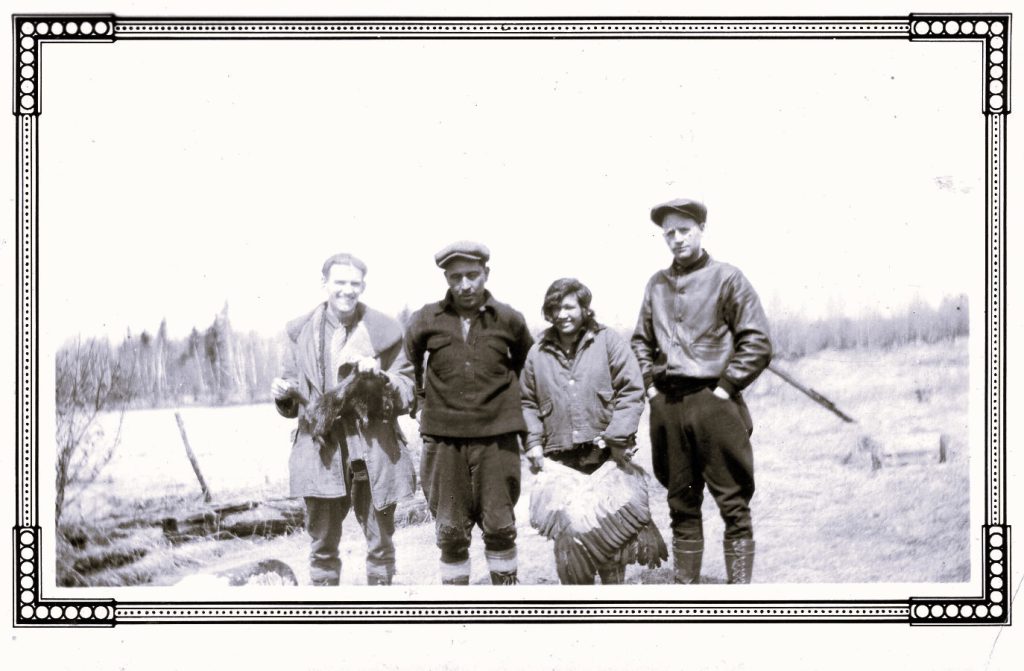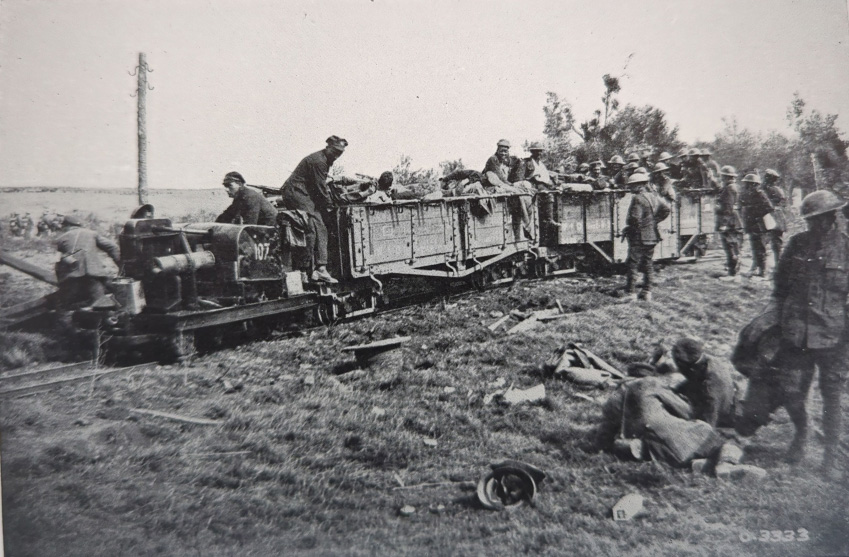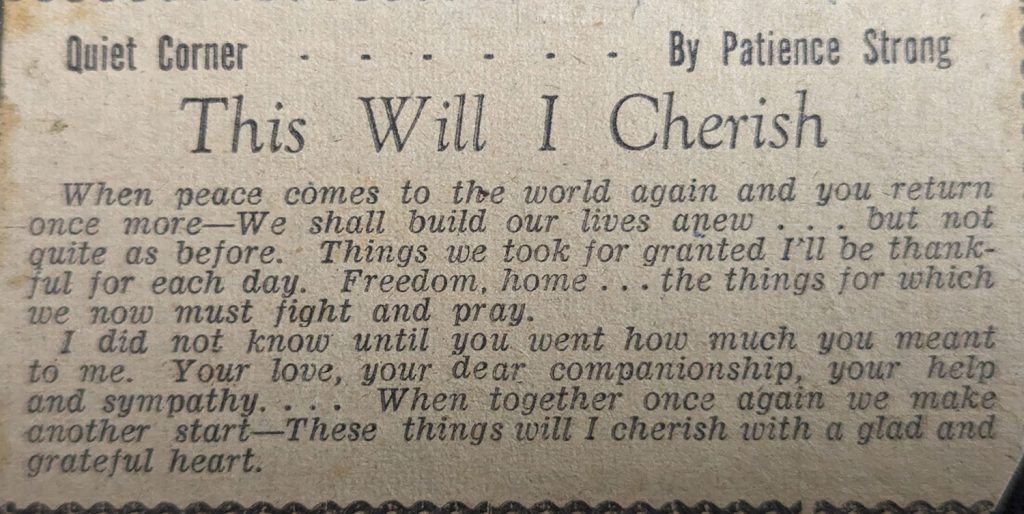Fours years! Four long years away from home, away from your new wife. Four years in foreign lands. Four years of being in danger constantly. For a young man whose biggest trip to date was to Sudbury by train, I can’t imagine how Dad felt, how it changed him.
But Dad did answer the call of duty and volunteered to go overseas. How could I sum this up in a few words, “He went to war”? I needed to give this the time it deserves.
Dad was with the First Canadian Infantry Division, First Brigade which was made up of three Regiments, The 48th Highlanders, The Hasty “P’s” and The Royal Canadian Regiment (RCR). Dad was a proud member of the RCR’s and was in “D” company. In researching the regimental history I had a good idea where Dad was during the war. For instance, when the RCR’s landed in Sicily on Sept. 10, 1943, C and “D” Companies were in the lead. By 9 am the RCR reached their objective, Pachino airport with “D” company in the lead. “At 1400 hrs while the Battalion was reorganizing, “D” Co. moved to high ground covering enemy approaches, but to get there they had to run the gauntlet of the fiercest machine gun fire of the day and despite suffering casualties they took their objective and 40 prisoners”
The next days were endless marches through extremely hot and dry country that the Canadians weren’t used to. Yet on they went, taking town after town. Even if there was no resistance at first, there were land mines, snipers and booby traps to contend with. From July 10th to 13th the Canadians only got 8 hours rest. July 17 -18 a battle took place at Valguarnera involving the RCR, resulting in 145 casualties for the Canadians.
On to more battles:
July 20 – 22 – 1st Brigade takes Assoro
July 23 – 25 – Agiro and Nissoria, “D” co. Heavily involved in back and forth action w. Germans.
July 31 – Aug 2 – Capture of Regalbuto by 1st Division.
The Germans in Sicily were beaten and began their retreat to mainland Italy August 10th (Dad’s 25th birthday). The Canadians received their first rest. Canadian casualties were 2310 in Sicily. Dad was there for it all and much worse was yet to come.
Italy
Italy surrendered on September 8th, 1943, which meant facing a very determined enemy in the German forces. By September 30th the RCR’s were working their way to their next major engagement. On the way, “D” co. was involved in “The Motta Operation” losing 6 dead and 22 wounded. Campobasso was then taken by “The Regiment”.
With winter coming on and snow in the mountains the German army began a very determined and fierce defensive strategy of picking the best vantage points in the roughest terrain, holding out as long as possible, then moving back to the next “death trap”. This is what faced the Canadians at the end of 1943 and to add to the challenge, Ist Division faced one of the top German Divisions, the 1st Parachute Division.
Moro River
Dec. 5-10, 1943 – A large scale attack by the British 8th army began. The first attack by the RCR failed but D Co. held their position overnight and during a fierce battle the next day. The RCR’s suffered the most casualties of all the Canadian battalions, 21 RCR dead and 53 wounded.
The Gully and Ortona
Also called the day of disaster, it started with C and “D” companies in the lead. Due to bad maps and intel, “ The advancing RCR suddenly found themselves faced with a strong group of German paratroopers who were left unscathed from the barrage”. “A murderous cross-fire laced the Canadians. Men dropped like flies. The two leading companies, C and “D”, were smashed to pieces”. The two companies were so decimated that they had to be merged to form one company. Passing through days later the soldiers saw, “About thirty B and “D” company bodies laid out in two rows along the road”. The Regiment was on it’s way north to cut off the Germans who were heavily engaged with 2nd Canadian division in Ortona. Fighting took place Christmas day but forced the Germans to retreat from Ortona for fear of being cut-off. December the Regiment went into reserve for a well deserved rest.
Since landing in Sicily, of the 756 “originals” who landed with the Battalion, 550 were casualties.
1944
January 13th the Regiment moved into the San Nicola area. The men were heavily involved in patrols and harassment of the enemy in order to take pressure off of the stalled Americans on the Italian west coast. These attacks cost 24 killed and 67 wounded.
Monte Cassino, Gustav and Hitler Lines and the Liri Valley
This was a period of much activity, troops were either on the move or stuck in stagnant positions under constant, nerve-shattering bombardment. These battles took place up till mid-August.
– 25 RCR killed and 60 wounded.
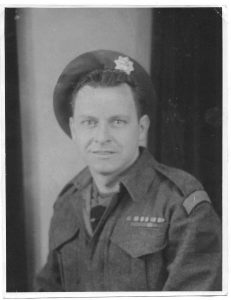
The Gothic Line
After several skirmishes, on Sept. 1st, a historian wrote,” The RCR led and became an enthralled part of an unforgettable war-night scene…It was a landscape of threat and terror, with a smouldering red glow or a break of fire at a hundred spots across the dark horizon. The Eerie, fitful panorama of war’s devastation was both chilling and fascinating, but instead of the flames of retreat, the enemy was razing the battlefield to obtain clear fields of fire”.
Sept. 3rd, “D” Company was involved in house-by-house fighting and the next day attacked the enemy with fixed bayonets
In the first 4 days of fighting at The Gothic Line, the Regiment lost 31 dead, 103 wounded and 16 missing.
Sept. 15th – 1st Brigade was tasked with taking Rimini Airfield, a key objective. B and “D” companies led the assault of the heavily defended airfield. In the first 2 days there were 74 casualties. It was a valiant day for “D” company; 16 Platoon – “In hand to hand fighting they killed twelve defenders, captured two and put the rest to flight”. 14 Platoon attacked an enemy held house, entering it and killing the defenders, then fighting off a counterattack by the Paratroopers.
By the 18th of September the airfield was in Allied hands.
Total Killed – 79 with 221 wounded and 12 missing.
The Lamone Crossing and Fosso Vecchio
These battles kept the RCR involved till the end of 1944, at one point fighting for 23 straight days.
Total: 52 Killed, 96 wounded and 31 missing.
1945
January 10th – back on the front lines to Bagnacavallo.
February 3rd – moved north of Mezzano.
February 23rd – The Regiment was being moved from Italy to join forces in North-West Europe. The Regiment arrived in Marseilles, France March 10th, 1945. They travelled from the Mediterranean coast, by-passed Paris to Belgium. On April 9th the crossed the border into Germany, then into Holland to liberate the Dutch people.
The Dutch City of Apeldoorn was tasked to The Regiment and was liberated on April 17th.
The Regiment lost 12 killed and 49 wounded in North-West Europe.
The Germans surrendered the first week of May but The Regiment was kept busy mopping up German prisoners, disarming them and later protecting them from Dutch resistance fighters.
The Cost
From the time Dad stepped ashore in Sicily to the finally battle in Holland the war cost The Regiment:
370 lives and 1207 soldiers wounded. Another way of looking at it, the odds against surviving the war were astronomical. And what was the cost to Dad? My uncles said he was not the same man when he came back. How could he be?
For family members who take the time to read this tribute to my Dad, I hope this fills in the gap in Dad’s story that few understood. How could we?
To Dad, thank you for your sacrifice.
Ed Hass Jr.- 2017
Pictures below – A picture Dad sent home to Mom from Italy. Mom was convalescing in a hospital in Gravenhurst, recovering from tuberculous. The entire time Dad was overseas Mom was in the hospital
Reunited
Sources of information were:
The Royal Canadian Regiment, Volume 2 by G. R. Stevens
The Canadians in Italy by Nicholson
